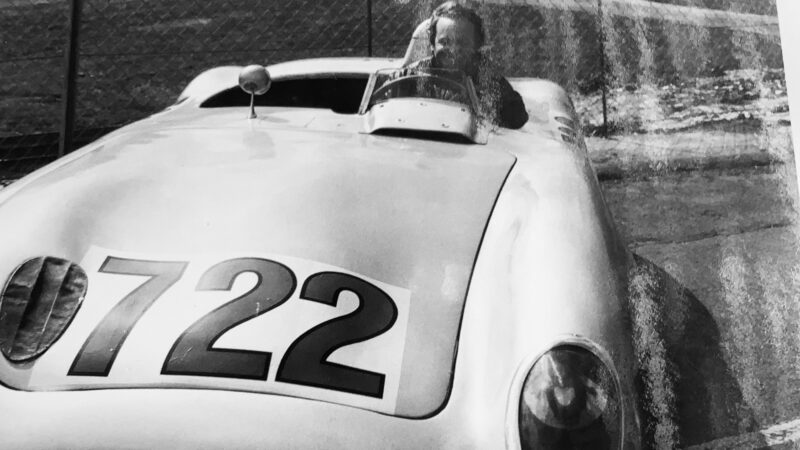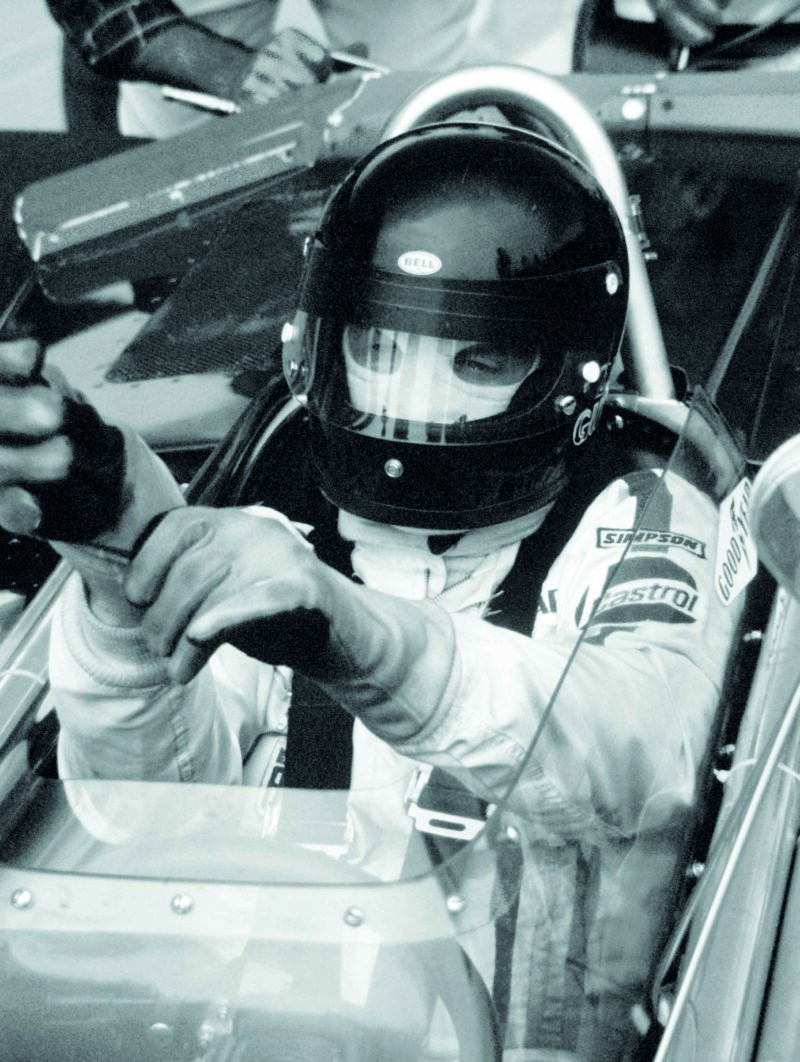Letters, January 2022
Bravo Motor Sport for highlighting the issues raised yet again by the F1 circus heading to the Middle East [The Editor, December]. This surely has to be an astounding display of double standards. F1 has been pleased to lend a platform to the Black Lives Matter movement whilst at the same time being happy to visit the money tree, known as the Middle East, where quite clearly many lives don’t. Stefano Domenicali is deluding himself and convincing no-one in stating as an excuse that “F1 could be a force for good in the region”. Many F1 aficionados are uncomfortable with the current position and it would be a good time for F1 to rethink its ethical guidelines.
Robin Torrance
Surrey
I couldn’t agree more with the editor Joe Dunn in regards to three F1 races in the Middle East. None of these three countries can brag about their human rights record whether you talk about how they treat their female citizens or how they treat low paid workers from other countries.
It is time that the FIA as well as the Formula 1 management group showed some guts and stand up for human rights instead of just looking at the cash flow into their accounts.
Bruce Yeo
Langley BC Canada
It was with great regret that I read Joe Dunn’s editorial comment about the Formula 1 races in the Middle East. F1 should stay out of politics, should not be seen to make judgements about where it races and where it does not, and Motor Sport magazine should do the same. If you give currency to the views of Amnesty International you are immediately taking sides and aligning with a particular view. There are other views.
We all know that there are countries around the world that do not share our politics, our religions, our beliefs or our values. They have that right.
Formula 1 and Motor Sport magazine should stick to what they are qualified to do and comment on.
Hugh Colver
Moulsford, Oxfordshire

Was this Moss’s Mille Miglia Mercedes ‘722’? Check the headrest and the numbering style…
There would appear to be more than one Mercedes-Benz ‘722’ doing the rounds [Matters of Moment, November]. I have a picture of myself sitting in a ‘722’ that was brought over from Stuttgart for the tribute to Stirling Moss in 1980 at Brands Hatch. It was quite a turnout with JM Fangio, JYS, John Cooper and er, um, Mark Thatcher, who raced a Formula Talbot that day.
Moss did a parade lap with Fangio in ‘722’.
The photograph shows that this car only had one headrest instead of the two in the Mille Miglia car. I subsequently found out that this car was a reserve that never raced.
Ian Dove
Cape Town, South Africa
[Doug Nye confirms that Mercedes-Benz has in the past displayed an unraced 300 SLR with a single headrest and the 722 numbering.]
Reading the article about Derek Bennett and Chevron [Lancs for the memories, December], it is worth pointing out that during the mid 1950s he was competing along with my father and others in midget racing cars, mainly at the Belle Vue speedway track in Manchester. These were mostly home-built machines, with JAP 500cc engines and no brakes. They were in effect four-wheeled speedway bikes – and in my view more dangerous. A photograph of Derek in his car can be seen in the biography Chevron.
Jack Butterworth
Royton, Lancs
Your V12 celebration in the November issue brings memories of wonderful sounds over the years. The selection of V12 greatest hits inevitably creates some questions. There is no doubt in my mind (or ears) that the Matra engine was the most musical of the lot. My 17-year-old ears were singing for days after the Brands Hatch 1000Kms in 1974. The sight and sound of those iconic blue cars accelerating up to Druids never fades. I also endorse the choice of the Aston Martin engine which found particular voice in the Lola prototype.
Worthy though the remarkable little Honda of the 1.5-litre era might be, surely the 3.5-litre engine found powering the McLarens in 1991 is more worthy of inclusion? Seven wins in a championship season is reason enough but being the last championship won by a V12 engine seals the deal. If we needed reminding, Bruno Senna’s demonstration in the car at the Goodwood Members’ Meeting provided a wonderful reprise.
Not that there have been that many V12 championships. How disappointing that the engines with the best soundtrack have powered so few world champions.
Stephen Chipping
Speldhurst, Kent
I read your revealing article about Al Unser Jr [Fall from grace, December]with interest. I had the pleasure of working with each of the Unser family during the 13 years they drove for Team Penske, but there were challenging moments with each. In motor sport terms they were national treasures but as individuals they were New Mexico street dogs, untamed, uncompromising and utterly ruthless competitors. The Unsers were the ‘Black Knights’ who, as confessed by Little Al, were raised by the belt and were in every respect the hard-drinking, smoking, womanising rodeo equivalent of James Hunt, whereas the ‘White Knight’ Andrettis were international icons, hallowed in everything they did.
As individuals the Unsers were great team members and delivered three championships, three Indy 500 victories and 23 race wins for Team Penske over 20 years. They were also very different personalities, but Jr, as is so often the case with sons of successful fathers, was always going to be judged by the achievements of Sr and Uncle Bobby. Victory to Al Sr and Bobby was strictly business but for Jr it was always proving a point to both his family and his nemesis Michael Andretti.
In ’94 and ’95 Jr was the class of the field; he was totally on his game but sadly his decline coincided with the less-than-competitive cars designed by Penske Cars and our Goodyear tyres when Firestones were the tyre to have. His demeanour changed. The causes were no secret within the team but as a team, and certainly with Roger too, we were totally loyal to Jr while knowing that he was overcoming his personal demons with substances and alcohol. Compounded by underperforming equipment this was reflected in his performance. Ranked first in 1994, he was 21st in 1999, his final season with Penske.
IndyCar drivers are far less cosseted than their Formula 1 counterparts, just another member of the team with a specific job to do. Emotional and mental problems in motor sport receive little in the way of sympathy, and are generally regarded as being a sign of weakness and so, as was the case with Jr, drivers seek solace with their favourite member of the media, or less attractive members of society. This in turn generates mistrust. Unlike Michael Andretti who was part of a close-knit and supportive family unit, Jr had no release for his depression, or the increasing sense of inferiority as he watched Andretti Autosport ascend into one of the major players in IndyCar. As Jr’s life spiralled out of control the world he had been so great a part of could only watch with despair.
It takes great courage to finally turn darkness into light and I am sure Jade Gurss’s book will solicit understanding and sympathy from the IndyCar world that admired Al Jr’s considerable courage and talent as a driver in a series far tougher than Formula 1. He was, and will remain, one of the best and, despite everything, those of us who had the privilege of working with him will always stand by his side with pride.
Nick Goozée
Dorset

Dan Gurney in full-face helmet at the 1968 Indy 500, predating Jackie Stewart’s adoption of such an item by a year
Bon D’Olivo via Getty Images
I hate to dispute anything involving auto racing safety and Sir Jackie Stewart, but on p139 of your October issue [Motor Sport Collection] there is an error regarding the Bell 1:2 scale replica helmet being sold to raise proceeds for his charity Race Against Dementia. The description of the item states that “Stewart… was the first to adopt the full-face helmet”. Actually, Dan Gurney should get credit for being first to wear the Bell Star full-face helmet, originally designed for motorcycle racing. Gurney wore one in the Indianapolis 500 in 1968 when he finished second and then wore it that summer when he returned to F1.
Stewart did practice with a full-face helmet for the ’68 US Grand Prix, but wore his open-face Buco with a flip-up shield in the race. A lot of drivers decided to forego goggles and use the flip-up face shield in 1968. Stewart continued to wear the open-face helmet in the first three races of 1969 – South Africa, Spain and Monaco – before changing over to the Bell Star for Holland and the rest of the ’69 season. And he actually went back to the open-face Buco for the first three races of 1970 – again South Africa, Spain and Monaco – before switching back to the Bell Star for the remainder of his career.
Rick Shafer
Greenwood, Indiana, USA
Thank you for another cracking edition. The sheer variety of Parting Shot always fascinates and transports me to a less complicated time which I enjoyed. The December item [below] is no exception and prompts a couple of thoughts.
The obviously irrepressible Osella mechanics deserve an award for toiling in the South African heat but would probably not have got a vote from Ron Dennis. Did one of them have the relevant copy of the Haynes manual for the Osella FA1 ? Jean-Pierre Jarier deserved an award for bravery if he saw the conditions his car was being prepared in.
Simon Jeans
Sherborne, Dorset
Contact us
Write to Motor Sport, 18-20 Rosemont Road, London, NW3 6NE
or e-mail, [email protected]
